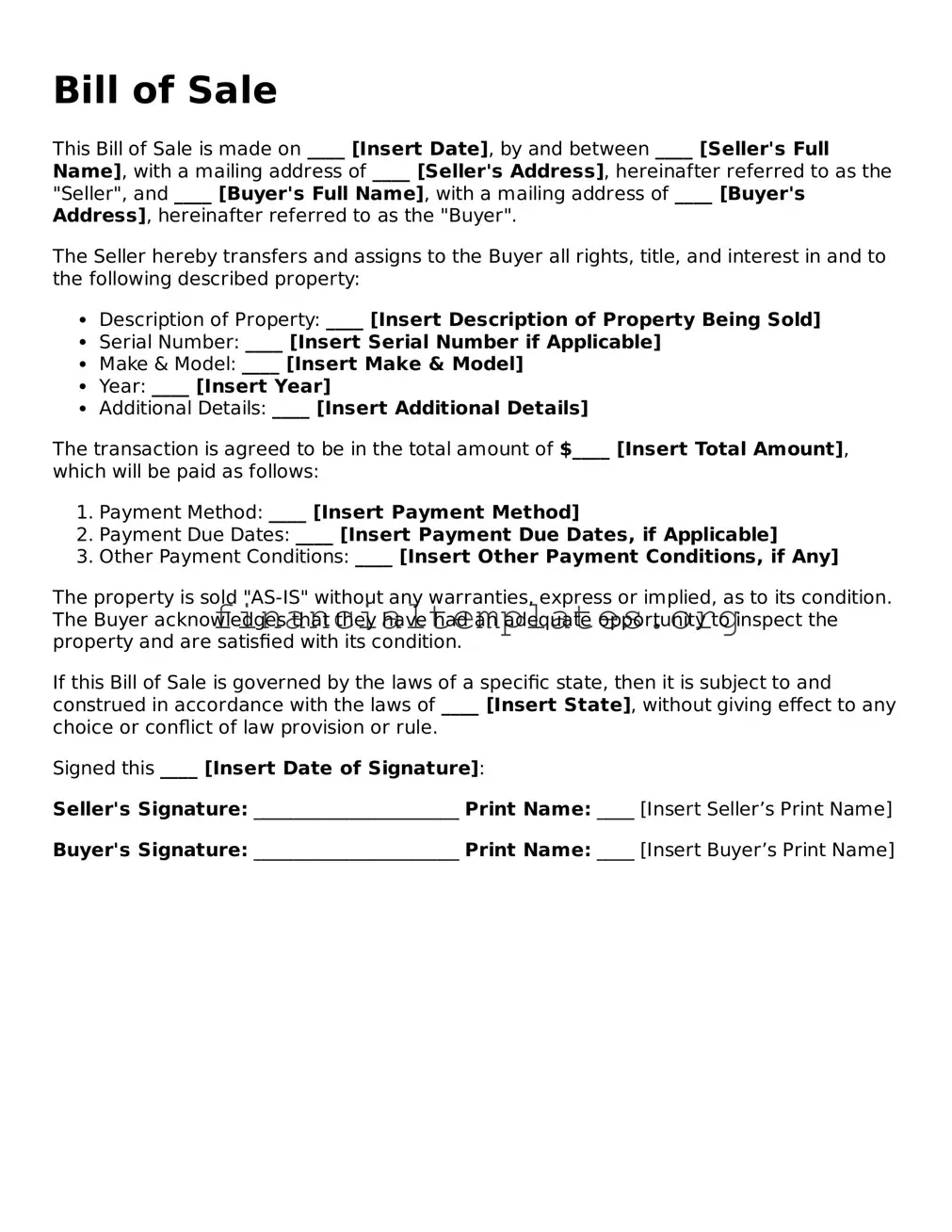A Warranty Deed is similar to a Bill of Sale in that both serve as legal proof of a transfer of ownership. A Warranty Deed is specifically used for real estate transactions, guaranteeing that the seller holds clear title to the property and has the right to sell it. It reassures the buyer of the legitimacy of the transaction, akin to how a Bill of Sale reinforces the sale of personal property.
A Title Certificate is another document bearing resemblance to a Bill of Sale, as they both establish ownership. While a Bill of Sale confirms the transaction and transfer of ownership for various items, a Title Certificate applies primarily to vehicles and real estate, officially recording the owner's details in public records.
Similarly, a Quitclaim Deed, like a Bill of Sale, is used in transactions involving transfer of ownership. The difference lies in the details; a Quitclaim Deed transfers any ownership interest the grantor may have without making any guarantees about the title's clearness, whereas a Bill of Sale transfers ownership of personal property with or without warranties, depending on its form.
An Invoice provides evidence of a transaction, comparable to a Bill of Sale. Invoices are used in the sale of services or goods, showing detailed information about the transaction, including the price, date, and parties involved. While an Invoice may serve as proof of purchase, a Bill of Sale is a more formal representation of transferring ownership of personal property or vehicles.
The Receipt shares similarities with a Bill of Sale, mainly in function as proof of a transaction being completed. While a Receipt usually acknowledges payment, a Bill of Sale confirms the transfer of ownership and includes additional details about the transaction, such as a description of the item sold and warranty information.
A Promissory Note is akin to a Bill of Sale in that it records an agreement between two parties. However, while a Bill of Sale documents the sale and transfer of ownership of an item, a Promissory Note details the borrower's promise to pay back a debt to the lender, outlining the payment terms and interest rate.
A Sales Agreement, much like a Bill of Sale, is a formal document that outlines the terms of a transaction between a buyer and a seller. While a Bill of Sale typically marks the conclusion of a sale, confirming the transfer of ownership, a Sales Agreement can serve as a preliminary agreement, specifying the obligations and conditions before the sale is finalized.
A Lease Agreement shares the concept of transferring rights, similar to a Bill of Sale. However, instead of transferring ownership of property or goods, a Lease Agreement grants the use or temporary possession of property in exchange for rent. This agreement details the terms under which one party agrees to rent property owned by another party.
A Security Agreement parallels a Bill of Sale in its function of documenting an agreement between parties, particularly focusing on transactions involving collateral. It secures a loan by giving the lender an interest in the borrower's personal property, distinguishing it from a Bill of Sale which solely documents the sale and transfer of personal or real property without involving loans.
